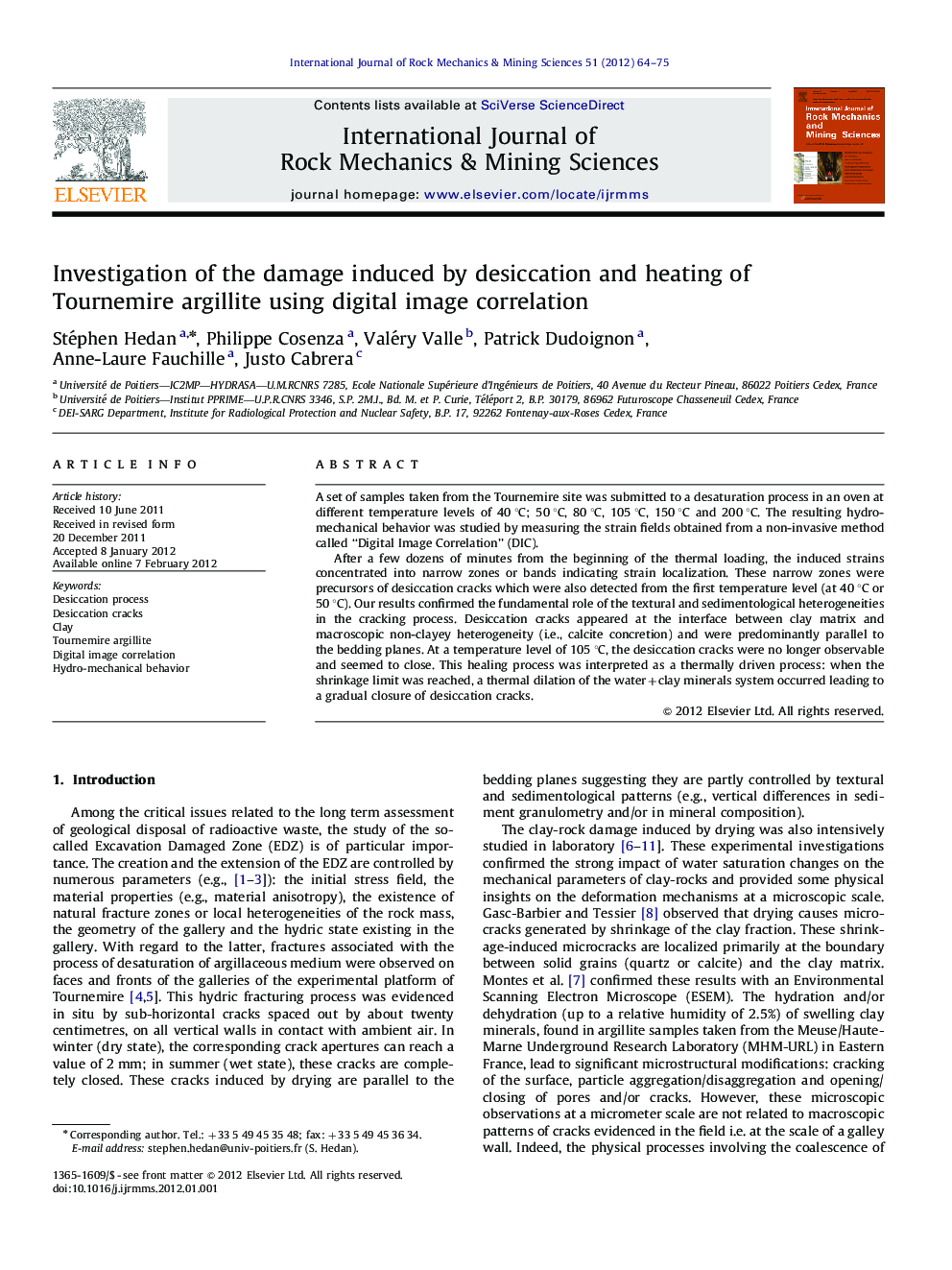| Article ID | Journal | Published Year | Pages | File Type |
|---|---|---|---|---|
| 809556 | International Journal of Rock Mechanics and Mining Sciences | 2012 | 12 Pages |
A set of samples taken from the Tournemire site was submitted to a desaturation process in an oven at different temperature levels of 40 °C; 50 °C, 80 °C, 105 °C, 150 °C and 200 °C. The resulting hydro-mechanical behavior was studied by measuring the strain fields obtained from a non-invasive method called “Digital Image Correlation” (DIC).After a few dozens of minutes from the beginning of the thermal loading, the induced strains concentrated into narrow zones or bands indicating strain localization. These narrow zones were precursors of desiccation cracks which were also detected from the first temperature level (at 40 °C or 50 °C). Our results confirmed the fundamental role of the textural and sedimentological heterogeneities in the cracking process. Desiccation cracks appeared at the interface between clay matrix and macroscopic non-clayey heterogeneity (i.e., calcite concretion) and were predominantly parallel to the bedding planes. At a temperature level of 105 °C, the desiccation cracks were no longer observable and seemed to close. This healing process was interpreted as a thermally driven process: when the shrinkage limit was reached, a thermal dilation of the water+clay minerals system occurred leading to a gradual closure of desiccation cracks.
► DIC method for study the behavior of Tournemire argillite submitted to a hydric loading. ► The narrow zones appeared and were precursors of desiccation cracks (aperture ≥80 μm). ► At a high temperature level, the desiccation cracks were no more observable and seemed to close. ► This healing process is interpreted as a thermally driven process.
